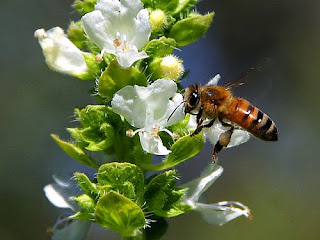“Anyone's life truly lived consists of work, sunshine, exercise, soap, plenty of fresh air, and a happy contented spirit.” - Lillie Langtry
Making your own soap at home, like cooking from scratch, is a great way to know and control the ingredients used, and add healthy alternatives from your herb garden and kitchen cupboard. And it doesn’t have to be difficult, expensive or time-consuming. It is certainly possible to make your soap completely from scratch and there are many books and resources to teach you how. If you want to keep it simple, though, an easy alternative is to use a melt-and-pour soap base and soap molds, which you can buy at craft stores or from many online suppliers. Soap bases are available in many varieties, including clear glycerin, cocoa butter, honey, oatmeal, olive oil, shea butter and, my personal favorite, goat milk. Goat milk soap is soothing and moisturizing, and when you add all natural ingredients to it, can be very beneficial to dry or sensitive skin. Lavender and oatmeal are also beneficial to the skin.
To make melt-and-pour lavender oatmeal soap, you will need the following:
- 1 lb. melt-and-pour goat milk soap base (or other variety of your choice)
- ¼ cup dried lavender buds
- ¼ cup old-fashioned rolled oats (don’t use quick-cooking or flavored varieties)
- large knife
- microwave safe measuring cup or bowl
- microwave
- popsicle stick or other stirring implement (creates less bubbles than a spoon)
- soap mold or molds which will hold a total of a little over a pound of soap (since soap mold sizes and shapes vary widely, this may be anywhere from three large bars of soap to half a dozen or more guest sized novelty soaps)
First, cut the soap base into chunks of about 1 ounce each (soap base often comes with pre-scored lines for cutting). Microwave the soap in the bowl or measuring cup, stirring after each 30-second interval. Microwaves vary, but this will probably take 2 to 3 minutes. When you are able to dissolve the last of the lumps by stirring, it is ready. Stir the lavender buds and oatmeal into the melted soap base. Pour the mixture into your soap mold or molds. Let the soap harden for a couple of hours or until completely solidified. Remove from the mold. If the mold won’t release the soap, put the whole mold into the freezer for about 10 minutes, then try again. Wrap the soap immediately in plastic wrap. This kind of soap does not have to cure, so you can begin using it right away. The soap will have a scrubby texture which is excellent for washing your hands after garden chores.




















